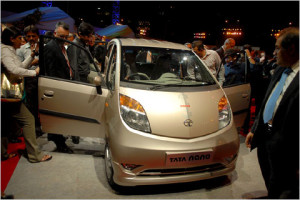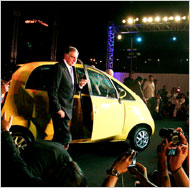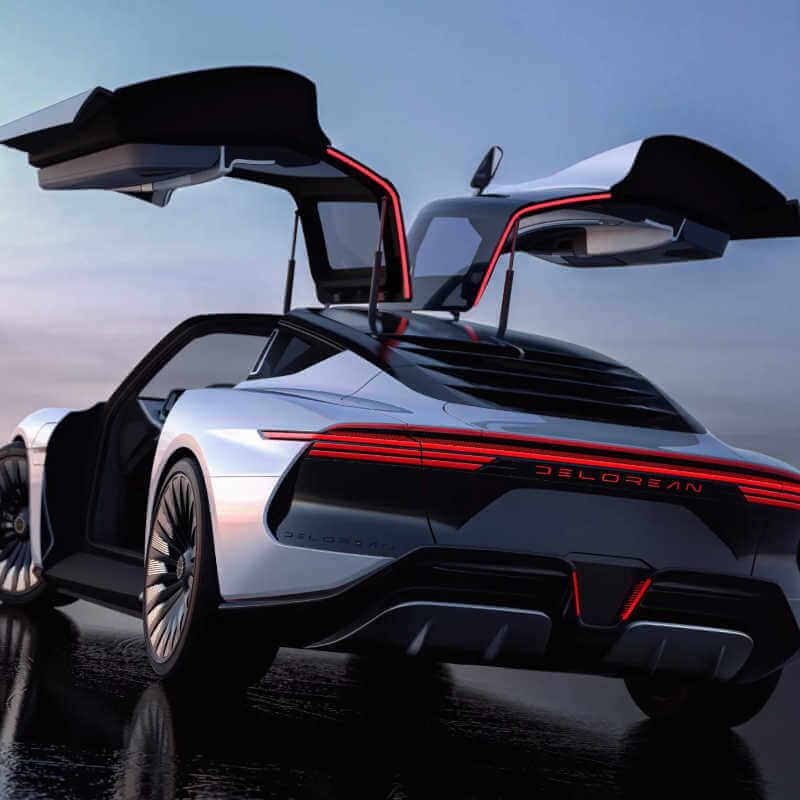Worlds Cheapest Car-Tata Nano Launched in Mumbai
MUMBAI — Amid camera flashes and the occasional shoving match between photographers, specifications and on-sale dates for the highly anticipated Tata Nano were finally announced at two elaborate media events here on Monday.
“We have made a promise and we have kept that promise,” Ratan Tata, chairman of the Tata Group, said during the first press gathering, held in the Taj Hotel.
The promise Mr. Tata was referring to was his ambitious goal to build a car with a starting price of only 100,000 Indian rupees ($2,000). While the Nano does meet its highly aggressive (and what many industry experts once deemed as totally unrealistic) price point, some hurdles remain to be cleared.
The Nano has been nicknamed “The People’s Car” because its starting price will make it accessible to more Indians than any other new car on the market. But the ultra-cheap, ultra-compact Nano comes with no frills. It runs on a 623-cc 2-cylinder engine with about 30 horsepower. Power steering and power brakes are optional on the base model. Airbags, antilock brakes and even a radio aren’t available at all.
The official launch of the tiny four-door car, however, was hardly lacking in pomp and ceremony. And perhaps lost amid the canapés and five-star service of the Taj Hotel (which is owned by the Tata Group and was a target of last year’s terrorist attacks) was the fact that, despite appearances, the Nano isn’t exactly on sale yet.
The first models arrive in dealer showrooms in early April. Application forms to register to buy the car will be accepted from April 9-25. And for the first time in company history, Tata Motors will charge a fee (about $6) to anyone who applies to buy the car.
First deliveries of the Nano to customers will occur in July. This news comes after what has already been more than six months of production delays. Political protests over the company’s land acquisition methods forced Tata to abandon a nearly complete factory built for Nano production in the state of West Bengal. Rather than risk provoking the situation, Tata decided to base Nano production elsewhere.
A new factory is now being built in the western state of Gujarat, though initial demand for the Nano is expected to outstrip supply. The company revealed the Nano “a good nine months before the new plant has come on-stream,” Mr. Tata said. “We have done this to fulfill expectations.”
One of those expectations is that the company would stick to the 100,000 rupee price. The company has done this, sort of. The headline-grabbing price applies to only the base model and is exclusive of all taxes and transportation fees. The cheapest Nano, minus options but with all applicable charges, will cost about $2,230.
Tata Motors has applied for more than three dozen patents relating to the cost-cutting measures it took in producing the Nano. Some of these methods are quickly obvious: there is only one windshield wiper, the dashboard is a single piece of (hard and shiny) plastic, and the tires ride on tiny 12-inch steel rims.
One uncomfortable aspect of the Nano’s cost-cutting regime — and an exceedingly awkward moment during a Q & A session held during the early press event — was the importance of India’s cheap labor. An executive huddle followed a journalist’s query, which lead to another mad scramble among hundreds of photographers eager to capture the situation. Ravi Kant, managing director of Tata Motors, finally stated that the yearly salary of a Nano factory worker is 150,000 rupees – or less than $3,000.
After the elegance of the Taj Hotel’s ballroom, the next stop in the Nano’s Mumbai media launch was a 10 minute drive away, to an even more elaborate outdoor press conference held on the grounds of the Parsi Gymkhana. Journalists, executives, Tata dealers and “financiers” (according to the reserved seating signs) watched as lights flashed, music blared, and three Nanos slowly rolled onto the stage.
The presentation lacked the quiet dignity and humility of Mr. Tata’s earlier speech. Huge video monitors and a 40-foot tall sphere projected images of the Nano, along with a voice-over comparing the car’s introduction to the scaling of Mount Everest, the Tiananmen Square protests of 1989 and Thomas Edison’s invention of the light bulb. It was an over-the-top send off for a car defined by prudence and economy.
Sourced via nytimes.com









